|
With the ever-changing, constantly-updating world of personal electronics, one situation my clients frequently face is cable confusion: drawers and bins full of cables and only a vague idea which devices they match and which cables are still needed. To further complicate matters, often the devices are stored elsewhere and cables are stashed in various places around the house (and cars). Do you have a nest of unknown charging cables hiding somewhere in your house? Let’s round them up and create a better system! Why do we get into cable confusion in the first place? Technology changes rapidly, forcing us to upgrade to the latest, greatest, fastest charging cable because our new phone/tablet/laptop is now incompatible with the old one -- the one that was the latest, greatest, fastest just last year! It takes time and effort to upgrade these technologies so it’s easy to skip taking the time out to dispose of the old cables and organize things properly. Cables and chargers also get messy when multiple members of your household are all sharing and accessing them on a regular basis, taking them out and, if they put them back at all, putting them back in the wrong place or in an untidy way. To create an organized solution, you’ll want to set up a system that makes it easy for you to identify and access the cables and chargers you currently need. Last weekend, I cleaned out my own electronics drawer. I did it using 3 Organizing Principles that you can apply to just about any organizing project. I store electronics accessories in a small drawer at my desk and it tends to get messy because other family members access the cables and chargers -- many hands are in and out of it frequently. As with other spaces that multiple people need to access, labels will be a big part of the solution to keeping this drawer organized so every family member will know what’s what and where things go. Organizing Principle #1: When organizing a small space, take everything out so you can see what you have and sort all of it at once. I dumped the whole drawer out onto the desk, then set about grouping the items into categories: cables, chargers, cleaning cloths (Wow, do these accumulate!), earbuds, miscellaneous. 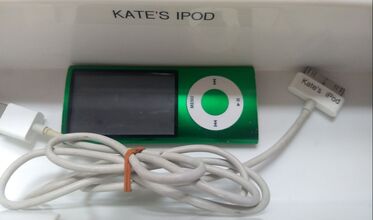 After grouping the items, it was easy to see the things that I could throw out or donate and the things that didn’t belong in an electronics drawer. Have a trash bin and a donation bag (I recycle grocery bags for this purpose) close at hand so you can immediately get rid of your discards. One thing that stuck out to me was a credit-card shaped piece of plastic that removes bubbles from screen covers. Why had I kept this? It’s a great example of the kind of thing that we hold onto for no good reason! If I get a new screen cover, it’ll either come with a new plastic bubble remover or I can just use an actual credit card, so this useless piece of plastic went into the trash. Also headed to the trash bin were worn or frayed cables and the little stickers with which my kids used to decorate their devices’ home buttons. I decided the tape measure, since it’s not electronics-related, should be re-homed to a desk drawer where it could live near the ruler and the larger screen-cleaning cloth went to my car where it can be used to wipe off the GPS screen. Of the cables I sorted, one was old and had a connector that didn’t fit any of our current devices. Because it’s not in current use, it shouldn’t live in this frequently-accessed drawer. Instead I’ll store it in a bin with old devices to deal with in a separate organizing project. [Check out my upcoming social media posts for ideas about how to handle old devices.] After eliminating the excess, I went through the remaining cables and wound them into neat bundles. A trick I like is to use hair elastics to keep the bundles together because they don't tend to dry out like rubber bands and they're a little bit smaller so you don't have to wind them around as many times. It may be tempting to want to use the hair elastics to color code the cables, but resist this temptation unless you live alone and are in complete control of your cables. Color coding is fussy and without a written key to explain the color system, it exists only in your head and no one but you will be able to maintain it. Plus, what happens if you run out of a certain color elastic? You’ll have to run to the store to buy a whole package just to maintain your system. Instead of color coding to maintain order, look to... Organizing Principle #2: Labels make for easy identification and retrieval. Professional Organizers love labels not just because they look tidy, but because they serve a real purpose: When things are labeled, it’s easy to identify them at a glance. I used my label maker to label the end of each cable (the end that plugs into the device) according to what type it is: Apple, Android, laptop, etc. If there’s an odd cable that goes with a specific device, make sure to label it in a way that makes it easy for others to know which device it goes with. For example, I still use an old iPod Nano and it’s now the only device we own that uses that old cable, so I labeled it “Kate's iPod.” That way, if someone comes across that cable in the drawer, instead of thinking it’s old and they can throw it out, they’ll immediately know that it goes to my iPod. So don’t throw it out! I personalized the labels for our laptop chargers too. My husband and I have laptops that use the same charger, so I just labeled those “MacBook,” but my daughter’s laptop uses a different charger so I labeled that with her name. If you don’t have a label maker, fear not! Use a piece of masking tape to create a little flag around the end of the cable and write on the tape with a permanent marker. After the cables were all organized, I bundled the headphones with more hair elastics. No need to label them because I’m the only one who keeps headphones here and they are universal, fitting any device. Now it was time to put the drawer back together. I dusted the drawer and washed the drawer organizers and put them back, configuring them with the smaller compartments in the front so little things are easier to reach. Organizing Principle #3: Designate a home for each item, so things end up back where they belong and outside items don’t drift in. This is an electronics drawer, so if it’s not in that category, it doesn’t belong here. Labeling each compartment will help cables, chargers, and other items find their way back into place after use while keeping stray items from taking up lodging in this drawer where they don’t belong. This was a small project that took all of 15 minutes from start to finish, but the impact it makes on my daily life is big. No more digging around the drawer in frustration, trying to figure out which is the correct cable and charger, and struggling to untangle it once I do find it. No more family members accusing others of stealing their chargers, because now everyone can find one when needed and, just as importantly, put it back when finished using it!
Let’s review the 3 Organizing Principles that came into play here:
You can apply these organizing principles to all kinds of small spaces: the “junk” drawer, a dry-goods pantry, a tool box, etc. Do you have a disorganized small space that you use on a daily basis that is bugging you? What space is it and how do you think you’d tackle it? If it’s a bigger small space, such as a pantry, try breaking it down shelf by shelf or category by category (baking, spices, snacks). P.S. Special recognition to anyone who can identify the exception to rule #3 in my drawer!
2 Comments
Your comment will be posted after it is approved.
Leave a Reply. |
Categories
All
Archives
July 2024
|
|
Copyright © 2024 Kate Bosch Professional Organizing LLC
|
Providence, Rhode Island | 401-699-4878
|

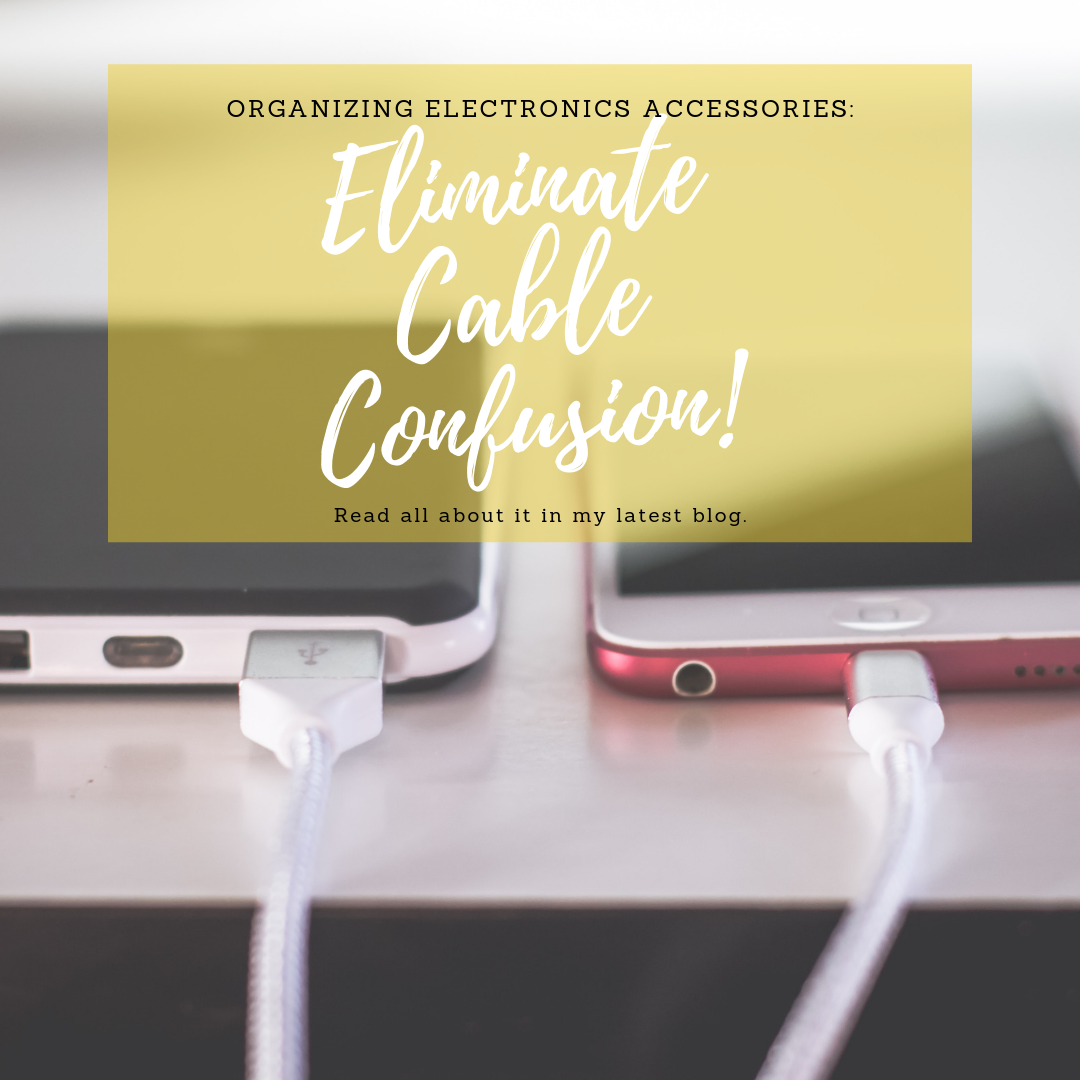
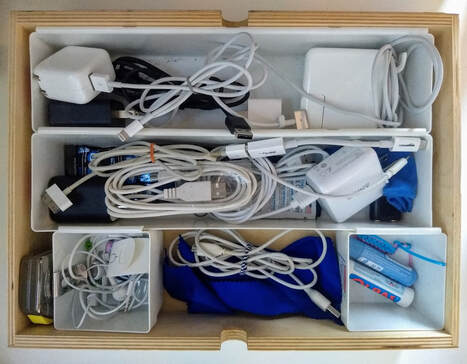
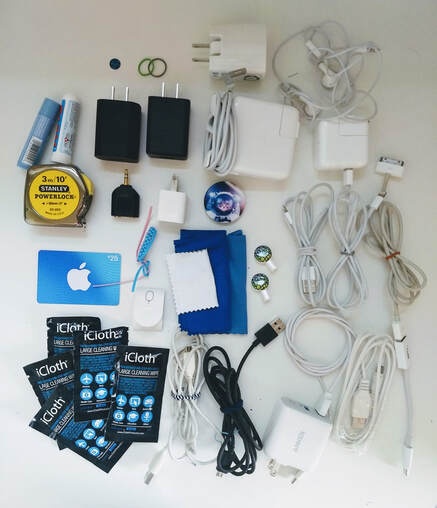
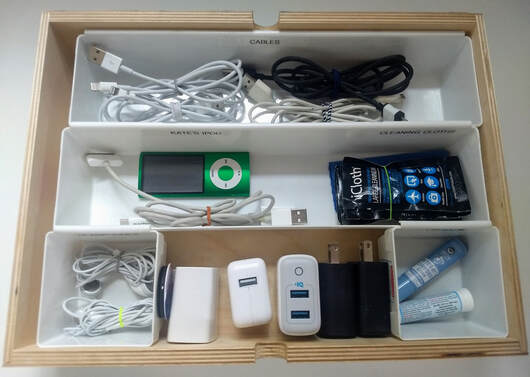
 RSS Feed
RSS Feed